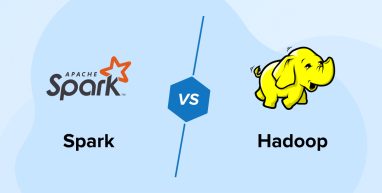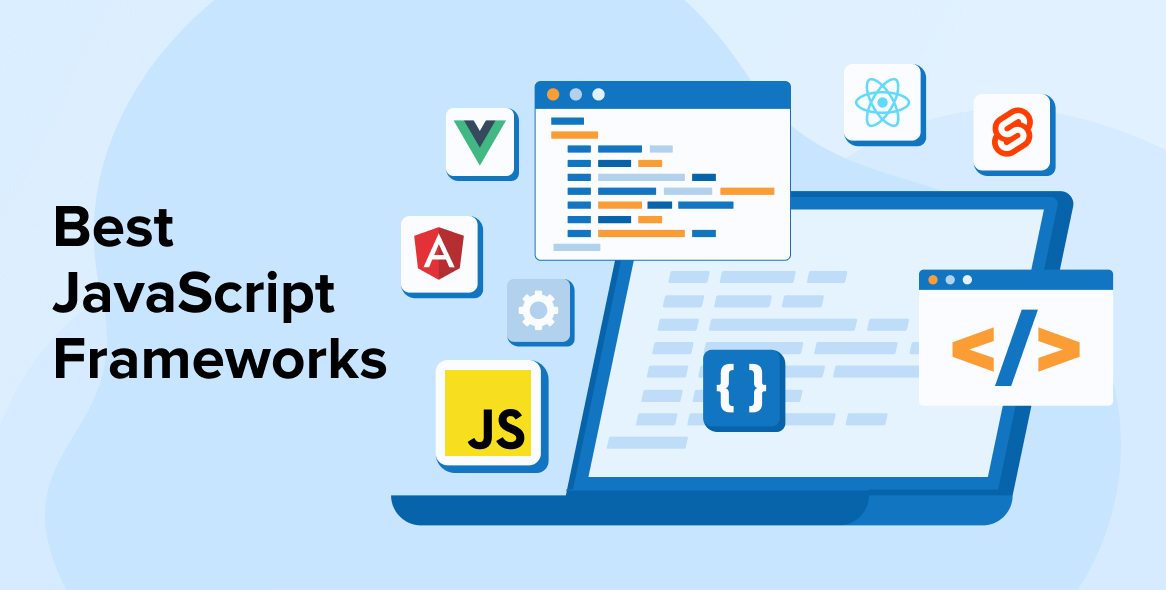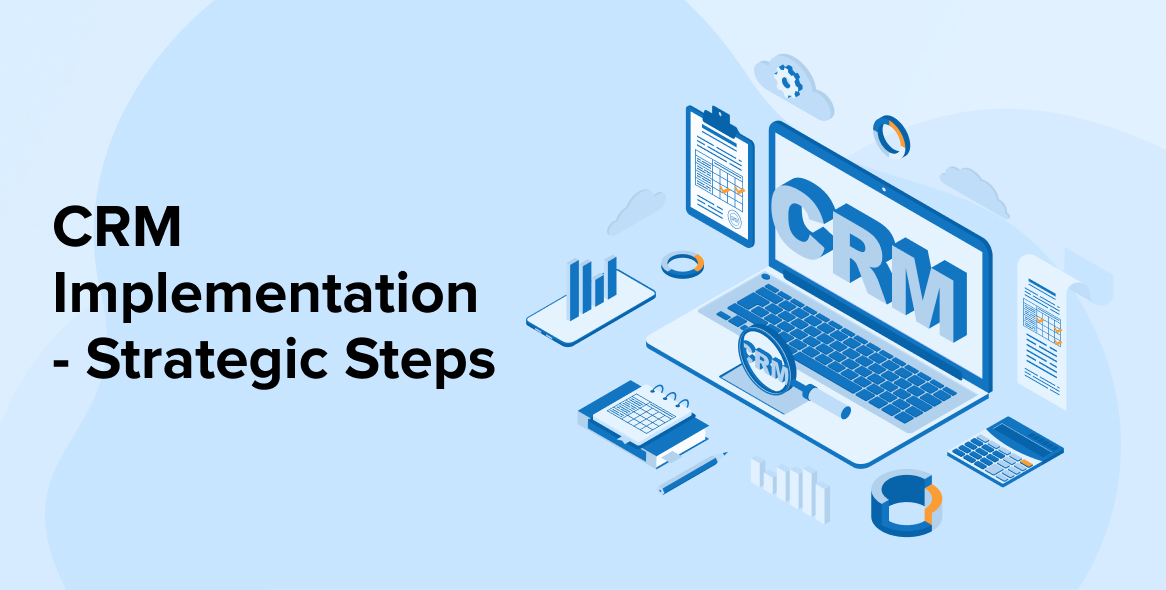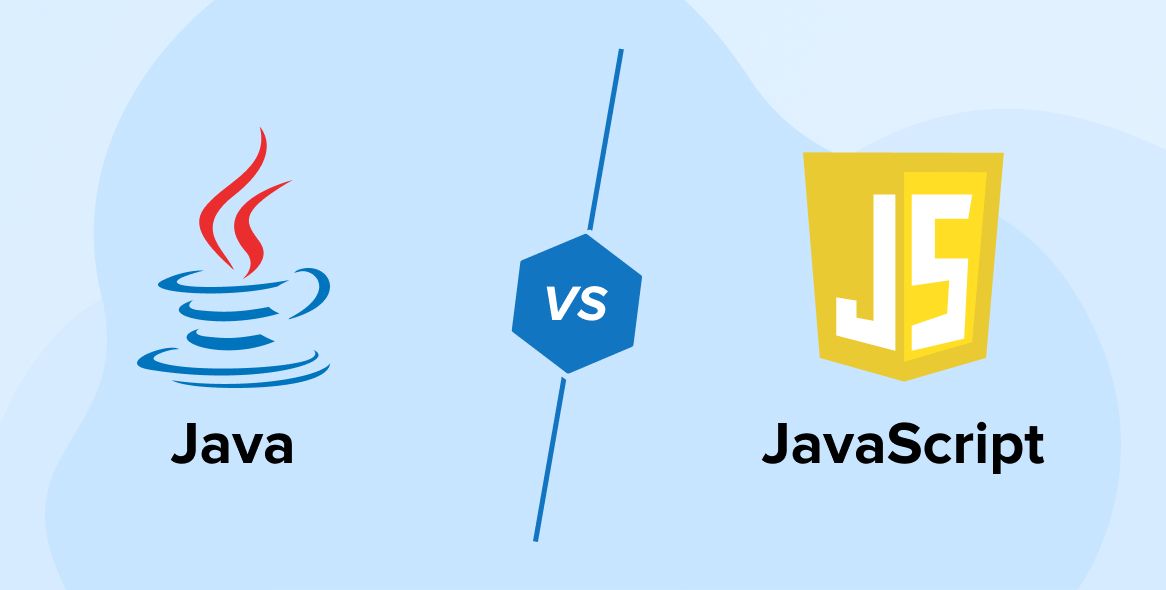
Apache software foundation is a pioneering company with the sole owner behind two popular products of the business market. By now, many of you would have guessed from the title which two products we are talking about here. Apache’s two most popular products are Hadoop and Spark. Both these open-source unified analytics machines are capable of bringing major changes within the business ecosystem.
With so many options available in frameworks, choosing one for your business is a daunting task. But there are businesses whose minds fail when it comes to differentiate between these two. One of the easiest ways to choose is to understand clearly which aspects of Spark vs the features of Hadoop stand out. Rather than comparing the pros and downsides of each platform, businesses should evaluate each framework from the standpoint of their particular requirements. So, this blog is a highlight of all the key differences between Hadoop and Spark. Also it will help business owners and enterprises to melt down to a decision. So, let’s start with the scratch first.
1. What is Spark?
Apache Spark is a distributed data processing framework with a core engine that is designed to work well in almost all types of situations. The Spark engine was intended to improve MapReduce’s efficiency while maintaining its benefits. Spark does not have a file system of its own, but it can access data from a variety of storage options. It uses Random Access Memory (RAM) for data processing and caching. Spark’s data structure is known as RDD (Resilient Distributed Dataset). It can easily process both structured and unstructured data. On the top of the Spark core, there are some libraries like SparkSQL, MLLib, GraphX and Spark streaming that offer wide options to function seamlessly. These libraries help us in performing functions like running SQL commands, automating using machine learning codes, graph-related problems and other data log streamings.
Now that we know all the bestowing factors, it’s time for us to know the parameters of both Hadoop as well as Spark and which one is better in each of the data analytic frameworks.
2. What is Hadoop?
Hadoop is a framework used to store and process large amounts of data.The system divides the data into blocks and assigns the pieces to nodes throughout a cluster using MapReduce. It divides enormous datasets into tiny chunks and analyzes them all at the same time. It’s a data storage and distributed processing system based on discs.
As we know that Hadoop is into sieving out insights so as a business you must know the need for how Hadoop can help you to extract insights from big data. Hadoop helps you subsequently process data in parallel on each node and resulting in a unique output.
There are in total four modules in Hadoop. These four pillars are Hadoop common, Hadoop Distributed File System (HDFS), MapReduce, and Yarn. There is a notion on which Hadoop’s modules are built which will reduce the hardware failures of individual machines or racks of computers. Hadoop manages this automatically by the framework in software. Hadoop MapReduce and HDFS were derived from Google’s MapReduce and Google File System (GFS) publications, respectively.
“Now, let’s move ahead to compare Spark and Hadoop with different parameters.”
3. Comparison Parameters for Hadoop and Spark
Following are the comparison parameters for Hadoop and Spark:
3.1 The Ecosystem Difference
Hadoop’s Architecture
The hadoop architecture is based on its fundamental modules. Many supporting technologies are also included in the Hadoop ecosystem for configuration, installation and maintenance. To begin, all files sent to the Hadoop Distributed File System (HDFS) are fractionated into blocks. Based on the set block size and the duplication factor, each block is recreated with predetermined requisites across the Hadoop cluster. The NameNode receives this data and keeps track of everything in the cluster. The NameNode has the power to assign files numbers as the data nodes in which they can write. There has been an addition in 2012 in which high availability was enabled, that allows the NameNode to failover to a backup Node in order to keep track of all the files in the Hadoop cluster.
The JobTracker component of the MapReduce algorithm resides on top of HDFS. Once you see an application written in one of the languages, it must be checked and tested. What Hadoop can do is accept the JobTracker, and distribute the work. This might range from anything like keeping word count, cleaning log files, conducting a HiveQL query or checking TaskTrackers of other nodes after the application is developed in one of the languages.
The JobTracker sets up resources, and YARN allocates and monitors them, moving processes around for efficiency. The MapReduce stage’s output is subsequently compiled and written to HDFS.
Spark Architecture
Apache Spark is a unified computing engine and set of libraries that is still being actively developed. It’s a standard tool for every developer who is interested in Big Data and its forms. It is used in parallel processing and real-time data processing on computer clusters.
Spark is built around Spark Core, which is the engine that controls scheduling of tasks, optimizations, and Resilient Distributed Dataset (RDD) abstraction. While it also helps in connecting Spark to the appropriate filesystem. Spark SQL, which lets you perform SQL queries on distributed data sets using Machine learning Library MLLib, GraphX for graph processing, and streaming. Some of the libraries that operate on top of Spark Core include, which allows you to enter continuously streaming data.
Java, Python, R, and Scala are just a few of the popular programming languages supported by Spark. It can run on anything from a laptop to a cluster of thousands of servers, making it a user-friendly system with a steep learning curve. Users can scale up to big data processing or to a massive scale.
3.2 Data Processing
Data Processing in Hadoop
The data processing aspect in Hadoop is not suitable for delivering fast answers to the added queries. But it is ideal for stored data that has been acquired over time. You can use it for forecasting your development plans, supply chain plans, predicting consumer choices, research, identifying the current data trends, and many other aspects of calculating aggregates over time, among other things, because it is better suited to batch processing. Hadoop uses MapReduce to divide the whole dataset into smaller chunks which can function simultaneously and save on a large amount of time. Hadoop is good for linear data processing and Batch processing however it is not suitable for iterative processing and hence spark was introduced.
Data Processing in Spark
Spark processes data in batches as well as in real time. Spark performs better even when data is stored on disc. In spark, the modules Resilient Distributed Datasets (RDDs) and DAGs play an important part in dividing the work into smaller operations. Spark can also be used to analyze data in real-time such as Twitter trending hashtags, digital marketing, stock market analysis, and fraud detection among other things.
3.3 Cost of Hadoop vs Spark
Hadoop and Spark are both open-source Apache projects that can be downloaded for free. It suggests there’s a chance you’ll be able to use it with no upfront costs. However, essential factors to consider are total cost of ownership, that takes maintenance, hardware and software purchases into consideration while detailing the price. Hadoop is less expensive to run because it uses any sort of disk storage for processing data. Spark, on the other hand, has a greater cost because it uses in-memory computations.
Because Hadoop and Spark are operating together, even on EMR instances that are intended to run with Spark installed, exact cost comparisons might be difficult to separate. The smallest instance costs $0.026 per hour, depending on what you choose, such as a compute-optimized EMR cluster for Hadoop. The cheapest memory-optimized Spark cluster costs $0.067 per hour. As a result, Spark is more expensive on a per-hour basis.
3.4 Scalability
In this part, the difference between Hadoop and Spark has become more hazy. To deal with large amounts of data, Hadoop employs HDFS. Hadoop can swiftly scale up to meet demand as the data volume grows dramatically. Because Spark lacks its own file system, it must rely on HDFS to handle large chunks of data.
The scalability of Apache Spark can be expanded by adding more servers to the network, the clusters may simply expand and improve computational capability. As a result, both frameworks can have tens of thousands of nodes. The number of servers you can add to each cluster and the amount of data you can handle are both unlimited. If we were to conclude on one that is the best in scalability then it would be hadoop because it has the potential to accommodate thousands of bytes of big data while spark can be a little less in this case.
3.5 Machine Learning
Firstly we must know the use of machine learning in Apache products- Spark and Hadoop. Machine learning makes it easy for in-memory computing breakdown, because it is an iterative process. As a result, Spark has shown to be a more efficient option in this area.
MLlib is Spark’s default machine learning library. This library conducts in-memory iterative machine learning computations. It has tools for regression, classification, persistence, pipeline construction, and evaluation, among other things. Thus Spark works speedily on machine learning applications.
When it comes to Hadoop, MapReduce divides jobs into concurrent tasks so that it may not be too massive for machine-learning algorithms to handle. In Hadoop applications, this approach causes I/O performance difficulties. In Hadoop clusters, the Mahout library is the primary machine learning platform. Mahout library uses MapReduce to manage clustering, classification, and data recommendation.
3.6 Security
When it comes to comparing this last aspect of Hadoop vs.Spark security, we’ll bring no surprise to the fact that “Hadoop wins hands down”. Yes, when it comes to the security feature of spark, it is a little less compared to Hadoop. By default Spark’s security is turned off. If you don’t set it on, it will not be able to find security threats.
The process of Authentication is like sharing secrets or event recording that can be used to increase Spark’s security. However for workloads, this is not sufficient.
Hadoop, on the other hand, uses multiple authentication and access control methods. Kerberos authentication is the most complicated method to implement. Hadoop is also supportive of Ranger, inter-node encryption, LDAP, ACLs, conventional file permissions on HDFS, and Service Level Authorization if Kerberos is too much for you.
4. Hadoop vs Spark : Comparison Table
| Comparing Factors | Hadoop | Spark |
|---|---|---|
| Language Support & Ease | With fewer languages supported, it’s more difficult to utilize. The languages of MapReduce programmes are Java or Python. | It’s easier to use and also allows you to use the interactive shell mode. The creation of APIs can be in Java, Scala, R, Python, and Spark SQL, among other languages. |
| Cost | It is less expensive to run as an open-source platform. It makes use of low-cost consumer electronics. It will be easier to locate Hadoop experts. | Although it is an open-source platform and also functions on the basis of memory, which significantly raises the cost of operation. |
| Performance | Slower performance, relying on disc, read and write speeds for storage. | Fast in-memory, performance with fewer disc reads and writes. |
| Sustainability with faults | A system with a high level of fault tolerance. There is data replication happening among nodes and used in the event of a problem. | RDD’s operations help Spark to achieve fault tolerance. It keeps track of the RDD block formation process and can recreate a dataset if a partition fails. Spark can also reconstruct data across nodes using a Directed Acyclic Graph (DAG). |
| Security | Exceptionally safe. Supports LDAP, ACLs, Kerberos, and SLAs, among other things. | It’s not safe as the security is by default in disable mode. To achieve the required security level, it relies on Hadoop integration. |
5. Conclusion
In this most-debatable blog on Hadoop vs Spark, we have accumulated all the facts together to help you get insights and make the right decision. However, choosing between Hadoop and Spark has always been a tough choice for business owners. It’s time for you to take a deeper look at each aspect of Hadoop vs Spark and get some clarity to jot it down to one of them and use it for data management.






Comments
Leave a message...